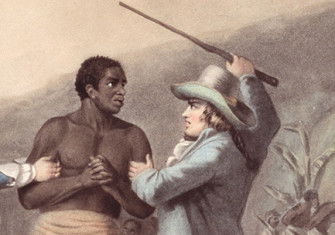Liverpool’s Slave Trade Legacy
Once the slave-trading capital of Britain, the memory of Britain’s empire of enslavement remains visible in Liverpool’s public buildings and streets.

In 1787 the Quakers of Portsmouth made their anti-slavery campaign official by forming The Society for Effecting the Abolition of the Slave Trade, joining forces with prominent abolitionists such as William Wilberforce. So organised were they in their methods of activism, such as civil disobedience, research and evidence-gathering, that they set the blueprint for many future lobbying organisations.
One of their most effective actions was to commission an illustration of the Liverpool slave ship the Brookes, named after its owner, Joseph Brookes, and present it to the nation in poster form, appearing in newspapers, pamphlets, books and coffee houses. The horror it showed quickly established the illustration as a hugely influential part of the abolitionists’ anti-slavery campaign.







